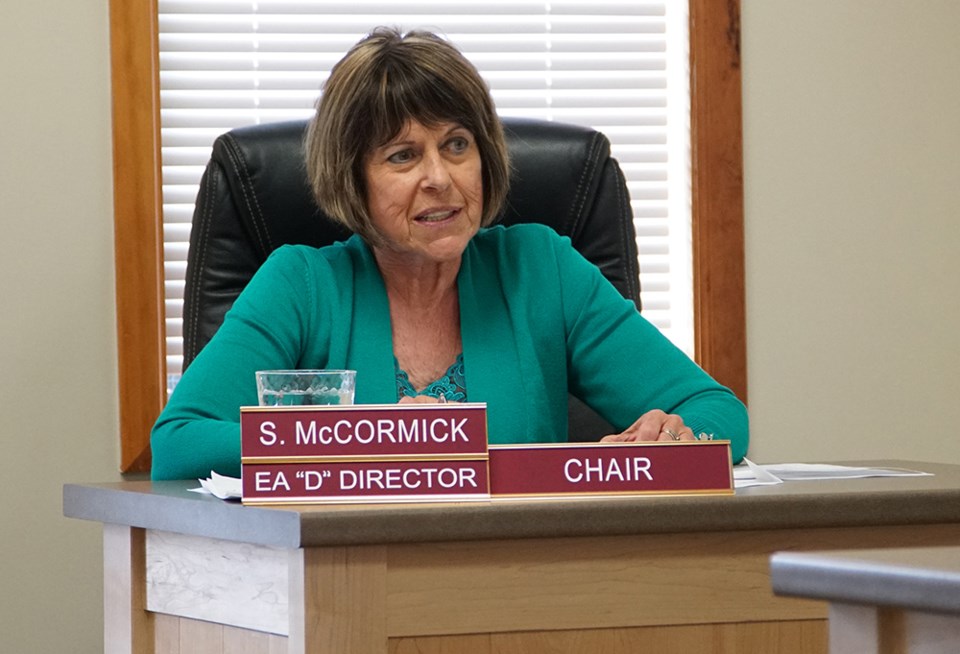qathet Regional District (qRD) will not be proceeding with a regional growth strategy.
At the June 30 board meeting, directors considered a recommendation to dismiss any further consideration of developing a regional growth strategy based on significant financial and human resources required. qRD's finance committee made the recommendation at its June 22 meeting.
On June 30, Electoral Area B director Mark Gisborne said he was voting against the motion because he believes this topic originally came up at a C3 meeting between the regional district, City of Powell River and Tla’amin Nation.
“I believe the discussion of a regional growth strategy is something all three of our local governments should have some discussion about,” said Gisborne. “The costs, now, are very preliminary. I don’t see any kind of major cost implication to send the [staff] report to the C3 and discuss it further there.
“This motion of, that’s it, we’re done, we’re dismissing any further consideration of developing a regional growth strategy, seems to me we’ve tried nothing and we’re out of ideas. I can’t support this resolution.”
Electoral Area D director Sandy McCormick said she supported the resolution.
“$100,000 a year for four years is a pretty significant cost, and really, growth strategies are to manage growth,” added McCormick. “We are not experiencing the kind of growth that some areas are and I don’t believe the pressure is here to need a strategy.
“I’m not saying that five or 10 years down the road things won’t be different, but for right now, I don’t think it’s necessary. We can spend our money on better things.”
Electoral Area A director and board chair Patrick Brabazon said he didn’t think the costs were insignificant. He said it was estimated in the staff report that the cost of a regional growth strategy is $100,000 a year for four years, plus a full-time staff member and additional staff time.
“C3 is not the appropriate place to initiate this conversation,” said Brabazon. “The appropriate place is right here. We are the ones who are going to be funding it. We’re going to be paying the bills.
“I don’t think we should start the ball rolling by talking to anyone else until we decide whether or not we actually want to spend that sort of money. That’s a lot of taxpayers’ dollars.”
Gisborne said he agrees that $100,000 a year is a lot to spend. He added, however, there could be grants available.
“If the three local governments choose to work together on this, I presume the province would be more willing to provide grant funding,” said Gisborne. “I don’t think we need to spend that kind of money for a regional growth strategy. Slow and steady, we can get ideas a little bit more fleshed out.
“As to the comment that we are not experiencing growth, I would point everyone to the census data we received. My understanding is that the Canadian national population growth between 2016 and 2021 was 5.2 per cent. Electoral Area B had an eight per cent increase, Area A had a 13 per cent increase, Area C was 6.4, Texada was 4.6 and the City of Powell River had a six per cent increase. The statement that we don’t have growth, I don’t buy that. It’s in the census data.”
Gisborne said the idea behind a regional growth strategy is to get ahead of pressures and impacts that will face the community as demographics and socioeconomic challenges shift.
“This is where I believe the regional district can work with the municipality and Tla’amin Nation and reach out to the province and ask for funding, and come up with a plan that could work for a regional growth strategy,” said Gisborne. “I don’t think we’ve seen a regional district as small as ours implement a regional growth strategy, but just because we have a small total population doesn’t mean we don’t have growth.”
Regional district directors voted to nix the growth strategy, with Gisborne opposed.



